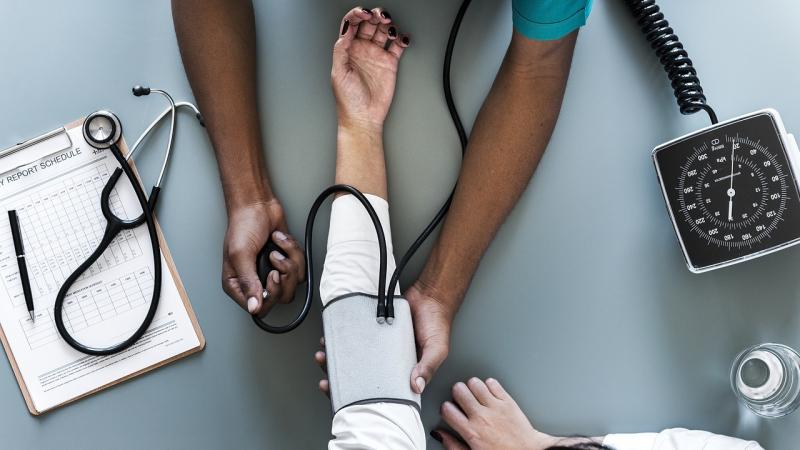
A new study recommends repeating blood pressure measurements to diagnose hypertension accurately.
Hypertension, or high blood pressure, is known to be responsible for 57% of all stroke deaths and 24% of all coronary heart disease deaths in India. In our cities, about one in three adults are diagnosed to be hypertensive, and fewer than half are even aware of their condition. Labelled a ‘silent killer’, this lifestyle-related condition is the biggest risk factor behind cardiovascular diseases, which has seen a rise in recent decades.
Is there a chance that hypertension in India is inaccurately overdiagnosed? It is possible, says a new study by researchers at the Public Health Foundation of India (PHFI), All India Institute of Medical Sciences (AIIMS), New Delhi, and the Indian Statistical Institute, who advocate repeated measurements of blood pressure to diagnose it right. The study, published in the Journal of Human Hypertension, found a 63% higher prevalence of hypertension when estimated through a single blood pressure measurement, as compared to an average of second and third measurements.
“In India, most physicians rely on a single BP measurement due to time constraints and in view of high clinical load in most health facilities”, says Prof Ambuj Roy from AIIMS, who is an author of the study.
As hypertension does not have any symptoms, in most cases, it is diagnosed by measuring the blood pressure using a sphygmomanometer—the familiar instrument where the doctor wraps a piece of cloth around your arm and pumps in air.
When blood is pushed into the blood vessels, it exerts a pressure, which we call the ‘blood pressure’. It is highest when the heart pumps and is called the systolic pressure and when the heart is at rest, this pressure is called the diastolic pressure. A measurement of the blood pressure records both systolic and diastolic pressures, and a healthy reading of both is 120mmHg and 80mmHg respectively. Any systolic pressure values beyond 140, or diastolic pressure values beyond 90, is characterised as hypertension. However, labelling one as ‘hypertensive’ just by looking at these numbers is not right.
A person’s blood pressure varies due to many factors—respiration, emotion, exercise, meals, tobacco, alcohol, ambient temperature, bladder distension, and pain being some of them. Since the measurement determines the health of one’s heart and predicts future heart-related events, the current study highlights the need to do it correctly. “Medical practitioners must be encouraged to adopt the practice of repeated measurements in the same visit with the mean of the second and third measurements being the clinic BP, especially in patients with high blood pressure,'' says Prof Roy.
The researchers used data from the National Family Health Survey, a nationwide survey conducted in India from 2015 to 2016, and calculated the prevalence and median difference in systolic and diastolic blood pressure readings for single and multiple measurements. They observed a considerable variation in these measurements with a decrease of 3.6 mmHg and 2.4 mmHg in the mean values of systolic and diastolic measurements of the second and third readings when compared to the first. This difference increased with an increase in BP measurement for the first time, indicating the importance of repeating measurements especially in individuals with a high first BP reading.
“Isolated single measurement increased the prevalence of hypertension by 63% as compared to prevalence while using the mean of the second and third reading”, says Dr Dorairaj Prabhakaran, Vice President – Research and Policy, PHFI, and an author of the study, talking about the findings. “In this young population, based on a single BP measurement the prevalence of hypertension was 16.5% and when the average of the second and third readings were taken, the prevalence reduced to 10.1%,'' he adds.
This incorrect diagnosis of hypertension means that individuals are put on life-long medications that are expensive and unnecessary. At a population level, these errors contribute to inaccurate estimation of hypertension prevalence, which guides policy decisions, and escalate the associated healthcare costs. However, for those whose measurements fell in the normal range, the researchers suggest that a single measurement is good enough.
The study has important implications for the newly launched National Health Mission in India where Health and Wellness Centers will play a pivotal role in diagnosing and managing non-communicable diseases like hypertension.
“Given that the community health workers, Accredited Social Health Activists (ASHAs) or NCD care coordinators are likely to measure BP initially, protocol guidelines should emphasize the importance of measuring BP thrice to prevent misdiagnosis and unnecessary commencement of hypertensive treatment in patients who only need to be encouraged to adopt a healthy lifestyle”, concludes Dr Prabhakaran.






